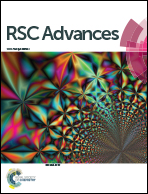Amination of enzymes to improve biocatalyst performance: coupling genetic modification and physicochemical tools
Abstract
Improvement of the features of an enzyme is in many instances a pre-requisite for the industrial implementation of these exceedingly interesting biocatalysts. To reach this goal, the researcher may utilize different tools. For example, amination of the enzyme surface produces an alteration of the isoelectric point of the protein along with its chemical reactivity (primary amino groups are the most widely used to obtain the reaction of the enzyme with surfaces, chemical modifiers, etc.) and even its “in vivo” behavior. This review will show some examples of chemical (mainly modifying the carboxylic groups using the carbodiimide route), physical (using polycationic polymers like polyethyleneimine) and genetic amination of the enzyme surface. Special emphasis will be put on cases where the amination is performed to improve subsequent protein modifications. Thus, amination has been used to increase the intensity of the enzyme/support multipoint covalent attachment, to improve the interaction with cation exchanger supports or polymers, or to promote the formation of crosslinkings (both intra-molecular and in the production of crosslinked enzyme aggregates). In other cases, amination has been used to directly modulate the enzyme properties (both in immobilized or free form). Amination of the enzyme surface may also pursue other goals not related to biocatalysis. For example, it has been used to improve the raising of antibodies against different compounds (both increasing the number of haptamers per enzyme and the immunogenicity of the composite) or the ability to penetrate cell membranes. Thus, amination may be a very powerful tool to improve the use of enzymes and proteins in many different areas and a great expansion of its usage may be expected in the near future.



 Please wait while we load your content...
Please wait while we load your content...